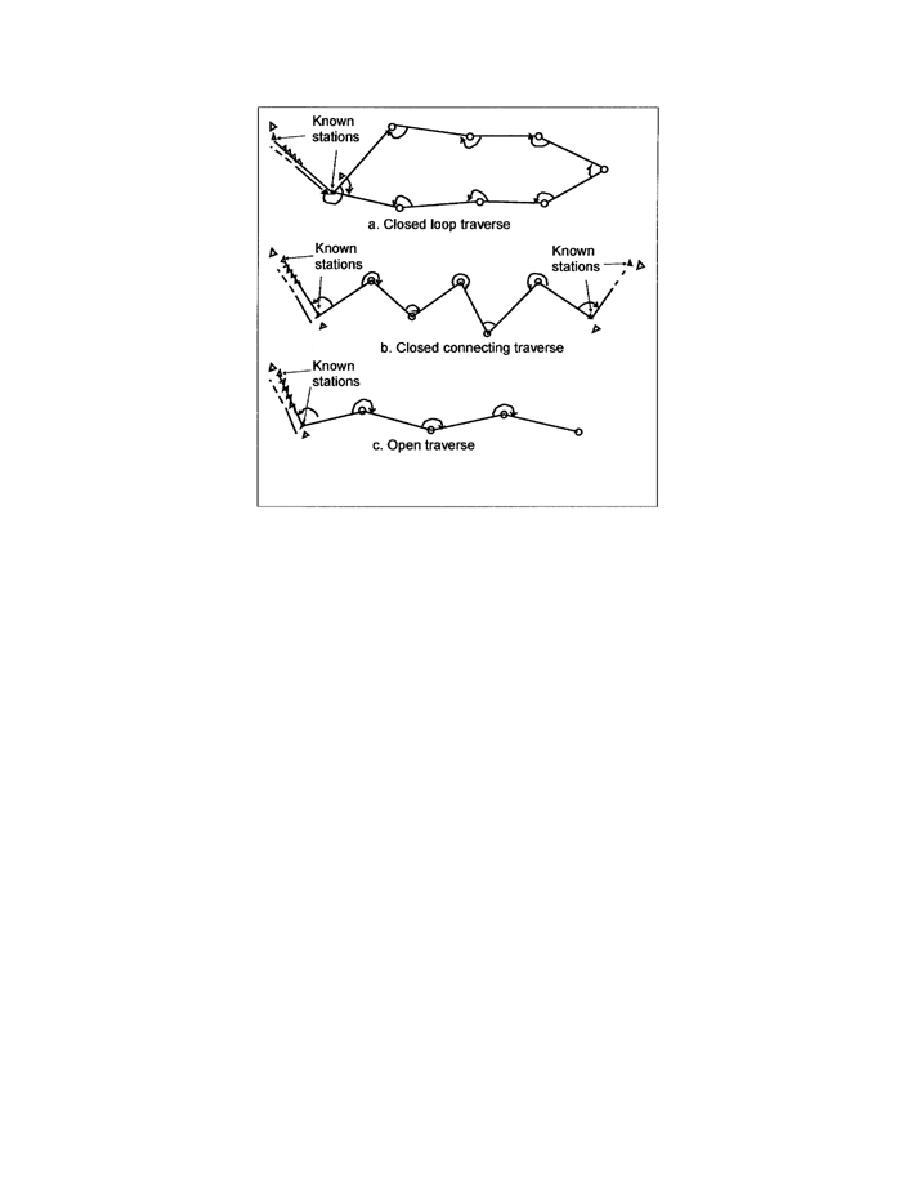
Figure 1-7. Principles of Traverse
(2) Open Traverse. An open traverse ends at a station whose relative position is not previously
known. Unlike a closed traverse, an open traverse provides no check against mistakes and large errors.
An open traverse usually starts at a station determined by a closed traverse or by triangulation but may
start at an assumed position. An open traverse is often used for a preliminary survey for a road or
railroad. When the centerline location traverse is run, ties to the preliminary traverse form a series of
closed-loop traverses. A random traverse is a special adaptation of an open traverse. It is run between
two stations to determine their relative positions. Running the computed line between the two points
usually closes the traverse. One example of a random traverse is the measuring of the distance between
points on opposite sides of a lake. This is done by running a traverse line around the shore. In this
example, the angles of the loop may be closed if a sight is determined across the lake from the final to
the initial point. This is not considered a closed-loop traverse, since the distance between the last and
the first point is not measured directly. If an electronic distance-measuring device is able to measure the
distance, the open traverse becomes a closed traverse.
NOTE: By measuring the angles between intermediate survey points and the length of the
traverse sides, you can compute not only the direction of the traverse but also the position of each
control point. Traverse control also uses astronomic observations for azimuth measurements.
b. Triangulation. Triangulation is the measurement of angles of triangles. It is the most common
type of geodetic survey. If you accurately measure the distance along
1-11
EN0593



 Previous Page
Previous Page
